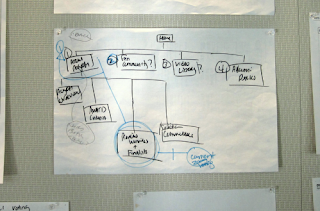(Post originally appeared on Hill Holliday Blog)
A recent blog article addresses whether the designer or consumer has greater influence over the behavioral patterns of the other. There is no doubt the corporate design approach is getting more people-centric, with a stronger emotional appeal. To answer the question asked at the end of the article about where the trends starts (whether it starts with the designer playing off the consumer behavior, or whether the designer shapes the idea of the consumer) I would have to say it is a complicated question. If this question were asked twenty years ago, the answer would be that designers shape consumer behavior and experiences. Now, I would say that designers react to the consumer’s patterns, behaviors, and emotions. Consumers engage with content in an entirely different way than they did even a decade ago – social networks including Facebook, Myspace, Twitter, YouTube are completely driven by the engaged user. People have the ability to post their reactions and emotions towards their environment and the content they engage with in real-time. Designers in this day of age react to the influence of this social and real-time mentality.
One recent example of design following the behavior and preferences of the consumer/user is a halfpipe in a freestyle park. Recently, I went skiing and some of the free-style equipment was tagged with graffiti, but on closer examination, I realized it was designed to look like it had been defaced. In this example the halfpipe’s designer played off of the rebellious nature of snowboarder or freestyle skier.
This article reminded me of a previous Forrester report on Emotional Experience Design. Forester proposes the idea that functionality can’t always solve corporate problems, but companies really need to get to the heart of the consumer’s goals, while developing a specific personality. The key to solving the consumer conundrum is appealing to the consumer on an emotional level.
Tweet

